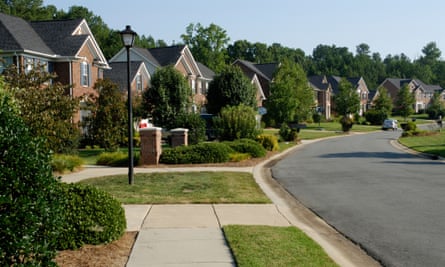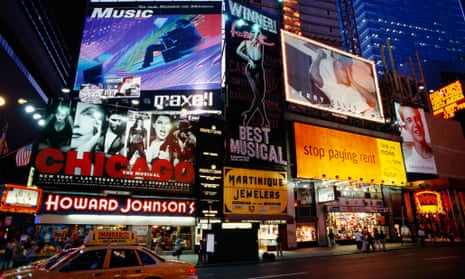Picture yourself on a habitual walk through town, perhaps to work or a local grocery store. Consider how much thought has gone into planning the streets and spaces you pass on this journey to maximise its efficiency. For transit, a successful street is above all one that saves us time – or, in other words, exists less.
As a result, we have created a shared urban environment that is, on the whole, oblivious or “numb” to necessities other than movement. Yet increasingly, research in the behavioural sciences is exposing the undesirable effects of this order of priorities, while highlighting a range of psychological issues linked to different urban conditions.
For example, urbanites walking busy streets often experience “cognitive load”. A product of heightened stimuli, this is known to diminish our attention capability. Contemporary theories concerning the long-term effects of growing up in an urban environment suggest it hampers our ability to handle stress, and might make us more susceptible to a range of psychological disorders.
It can be a different story in the suburbs: zealously dedicated to movement by car, the green spaces from which they supposedly benefit are too often stage-sets devoid of change, their streets missing the buzz of human activity that would restore interest. A study of the so-called “suburban blues” found that substance abuse, anxiety and depression are all more prominent among suburban teens, compared with inner-city counterparts of a comparable economic background.

So, if the emerging field of “smart cities” is attending to technologically “dumb” streets, couldn’t we also rethink our “numb” streets in ways that benefit their users psychologically? Could our streets alleviate ailments such as stress, anxiety and boredom by being sensitive to the pervading moods and personalities of people in different parts of the city at different times of day and night?
Let us picture what a “conscious city” might look like.
The foundation of consciousness lies in the city’s awareness of the motives, personalities and moods of its inhabitants. In 2014, a paper analysing data from the BBC’s 59,000 London participants of the Big Personality Test pointed to the spatial clustering of people with similar personality traits. Their findings “demonstrate how individuals with different personality dispositions derive life satisfaction from different aspects of their social and physical environments”. A map of the results revealed districts of London whose residents are more extroverted, open to experience, or emotionally stable than others.
Such findings are the beginnings of what might eventually generate the parameters for more successful person-environment interactions. Increasingly, we are a society that creates a constant stream of data reflecting our day-to-day experiences. Regardless of causality, the apparent clustering of common traits within residential neighbourhoods suggests that in shared public spaces, too, we might identify dominant urges and goals to which the city can respond.
Designing environments that affect our mood is no new invention, of course: pyramids were built to inspire awe, monasteries to encourage contemplation, and all too often architecture has been used to instil fear and obedience in its users. It isn’t that architects throughout history haven’t aspired to design with mood in mind; it is that their aspirations were only supported anecdotally and with a few crude instruments.
A conscious city could combine cutting-edge data, technology and planning techniques to address stable patterns of behaviour such as the flow of people to workplaces, while also reacting on a short-term basis to contexts such as a street concert or sports event, by temporarily adapting the streetscape.

To illustrate: when large events such as football matches end in violence or vandalism, we often blame a culture of hooliganism without questioning how the city might be setting the scene. The social science theory of “deindividuation” explains why individuals are more likely to behave differently in crowds. So, rather than defaulting to simple methods of crowd dispersion (the funnelling of fans into metro stations could be placing them in conditions that promote a crowd mentality), a stadium plan and its surroundings might quickly bring exiting spectators into situations unrelated to the event, to prompt social interactions that prevent prolonged deindividuation.
Semi-permanent changes to the city could be based around recurring urban activities, creating environments that predict the most beneficial mood for that activity. For instance, routes to a school might “prime” children for learning through playful urban interventions that arouse curiosity. Modifications of this sort would have a logical basis in scientific research: a recent study by the University of California found that “curiosity may put the brain in a state that allows it to learn and retain any kind of information”.
A conscious street might equally prevent discomfort by sensing an overload of stimuli and adapting accordingly. This could mean as little as turning off flashing adverts or trying to neutralise a racket of sounds. In the future, perhaps pavements could be widened at low-traffic times, or traffic limited when the street is overcrowded.
Too often, city streets fail to prioritise the human experience over other, often capitalistic, concerns. A study from the University of Michigan has highlighted the beneficial qualities of interaction with nature in contrast to urban streetscapes: a walk through a forest was found to be “filled with intriguing stimuli [that] modestly grab attention”, thus having a restorative influence on cognitive abilities. Could such an environment be recreated in a city, even one devoid of much real greenery?
In contemporary architecture, a small number of buildings already exist that apply environmental psychology and neuroscience to improve the experience they provide. The proven advantages of natural light and views of nature, for example, have been successfully used in education and healthcare facilities. These are the beginnings of “conscious architecture”, designing surroundings with a heightened awareness towards the users of a space, and the activities taking place within.
Scaling up these efforts by considering the totality of the urban experience isn’t just a matter of making our lives more pleasant or interesting. It is also an act of reclaiming for our benefit large swathes of our environment that have long been ignored in subservience to efficiency. We expect our buildings to address a whole spectrum of needs and desires; so, too, should our cities.
Our streets can make us more relaxed by offering spaces that feel safe and intimate; more focused by indicating a sense of control and authority; or aroused by enabling surprising and novel events. Assuming that urban surroundings can be designed to invoke hopefulness, for example, we can support the facilities that need it most, like hospitals.
In 1968, Henri Lefebvre wrote La Droit á la Ville, in which he proposes ideas for a new approach to urban engagement. “The right to the city” is summarised by Professor David Harvey as “far more than the individual liberty to access urban resources: it is a right to change ourselves by changing the city … The freedom to make and remake our cities and ourselves is, I want to argue, one of the most precious yet most neglected of our human rights.”
To design sensitive cities is to restore significance to spaces intentionally drained of content. We can and should be designing streets that, while serving movement effectively, are also sensitive to the mood and context of their users. The conscious city considers new parameters for successful planning. It presents an opportunity to raise the intelligence of our surroundings and improve our wellbeing. That is our right to the city.
Architect Itai Palti and neuroscientist Professor Moshe Bar, director of the Gonda Multidisciplinary Brain Research Center at Bar-Ilan University, collaborate on research concerning the potential of designing with psychological effects in mind

Comments (…)
Sign in or create your Guardian account to join the discussion